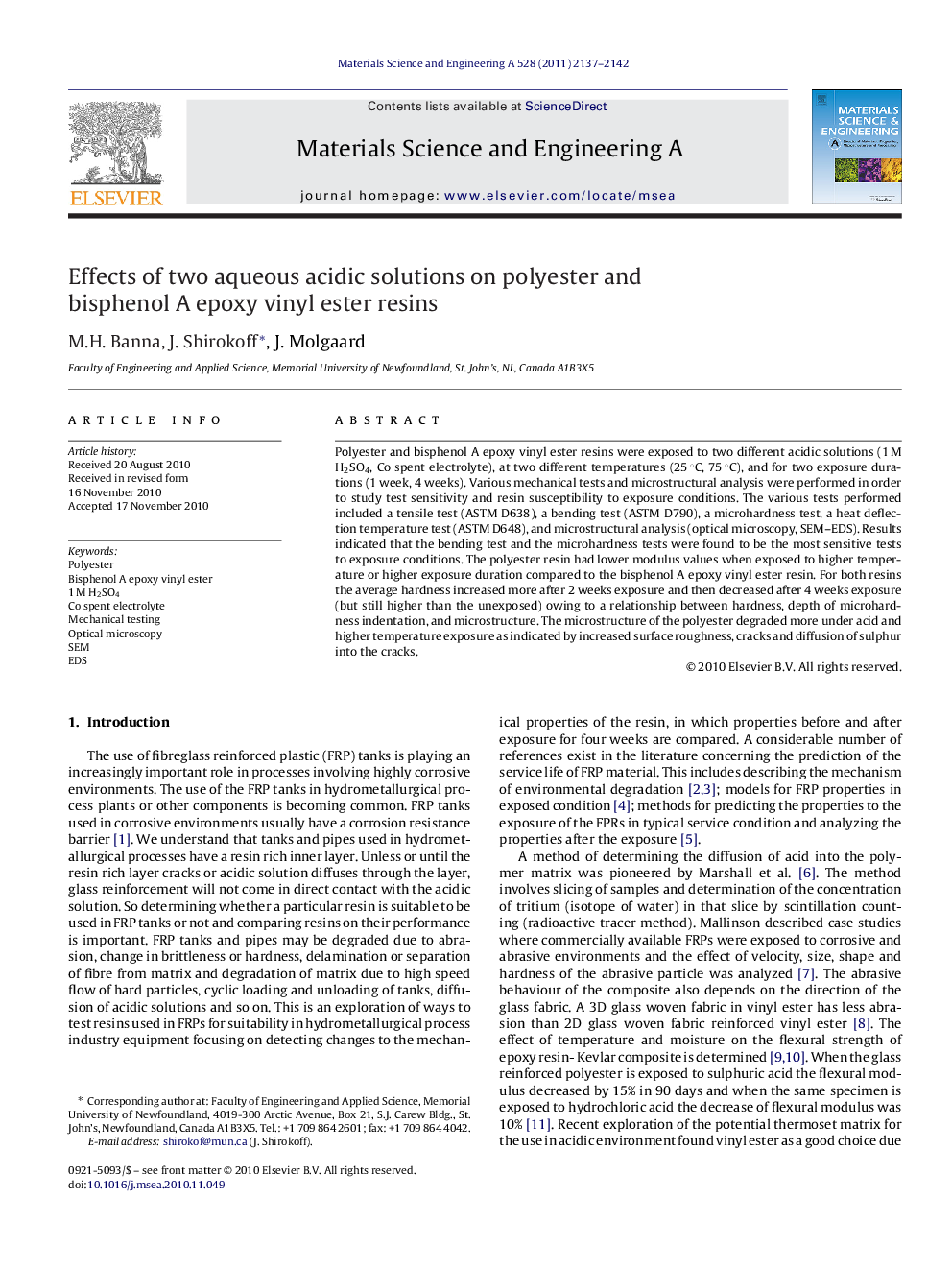| Article ID | Journal | Published Year | Pages | File Type |
|---|---|---|---|---|
| 1578801 | Materials Science and Engineering: A | 2011 | 6 Pages |
Polyester and bisphenol A epoxy vinyl ester resins were exposed to two different acidic solutions (1 M H2SO4, Co spent electrolyte), at two different temperatures (25 °C, 75 °C), and for two exposure durations (1 week, 4 weeks). Various mechanical tests and microstructural analysis were performed in order to study test sensitivity and resin susceptibility to exposure conditions. The various tests performed included a tensile test (ASTM D638), a bending test (ASTM D790), a microhardness test, a heat deflection temperature test (ASTM D648), and microstructural analysis (optical microscopy, SEM–EDS). Results indicated that the bending test and the microhardness tests were found to be the most sensitive tests to exposure conditions. The polyester resin had lower modulus values when exposed to higher temperature or higher exposure duration compared to the bisphenol A epoxy vinyl ester resin. For both resins the average hardness increased more after 2 weeks exposure and then decreased after 4 weeks exposure (but still higher than the unexposed) owing to a relationship between hardness, depth of microhardness indentation, and microstructure. The microstructure of the polyester degraded more under acid and higher temperature exposure as indicated by increased surface roughness, cracks and diffusion of sulphur into the cracks.
Research highlights▶ Acid exposure affected polyester resin more than bisphenol A epoxy vinyl ester. ▶ The bending test was the test most sensitive to exposure conditions. ▶ Microhardness showed a relationship between indentation and microstructure. ▶ Optical microscopy revealed surface roughness and cracks. ▶ SEM–EDS identified sulphur from acid in surface cracks.
